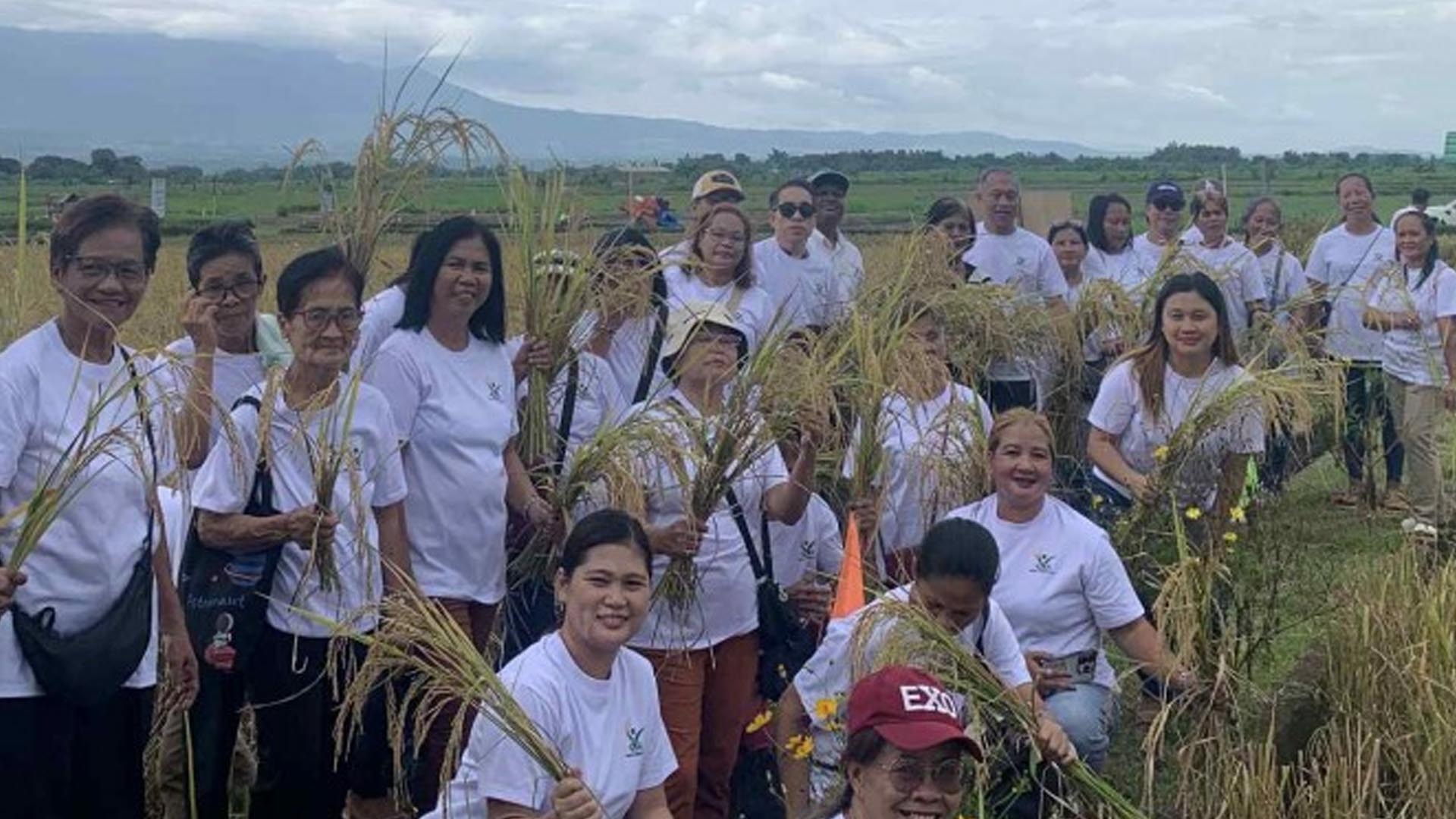The Department of Agriculture-Philippine Rice Research Institute (DA-PhilRice) introduced Thursday two high-zinc rice varieties to help reduce zinc deficiency, one of the leading contributors to stunting among Filipino children.
The ceremonial “Unang Ani (first harvest)” at the DA-PhilRice Negros Station experimental field here was led by Director Ommal Abdulkadil and Dr. Mallikarjuna Swamy, high-zinc rice lead breeder from the International Rice Research Institute, in the presence of a group of farmers and agriculture students.
In his message, Abdulkadil said “the innovative rice variety is a powerful step toward addressing micronutrient deficiencies in the communities.”
“We are observing the Nutrition Month. We highlight the vital role of high-zinc rice in promoting better nutrition. Zinc is an essential nutrient that supports growth, immunity, and overall well-being. Our high-zinc rice shows that the solution to hidden hunger can begin right at our dining table,” he said.
The two high-zinc rice varieties harvested for the first time in Negros are NSIC Rc 460 and NSIC Rc 648.
The zinc-rich rice is also being planted in Bual Norte, Midsayap and in the Science City of Muñoz, Nueva Ecija as part of PhilRice’s initiatives to make more nutritious rice accessible to communities across the country.
Based on the 2021 data of the National Nutrition Survey by the Department of Science and Technology Food and the Nutrition Research Institute, about 26.7 percent of Filipino children under five years old are stunted, a condition linked to inadequate intake of key micronutrients such as zinc.
Swamy said one cup or 150 grams of cooked NSIC RC 460 or Rc 648 rice per day can provide up to 25 percent of the daily zinc requirement for pre-schoolers.
Released in 2016, NSIC RC 460 contains 19.6 mg/kg of zinc, while NSIC RC 648, which was approved in 2021, contains 20.4 mg/kg, higher than the average zinc content in common rice varieties.
In a statement, Healthier Rice Program project lead Leonilo Gramaje said the DA-PhilRice’s efforts to produce zinc-rich rice varieties are part of a nationwide seed multiplication strategy.
He said DA-PhilRice Negros will lead the seed distribution for the Visayas, Nueva Ecija will serve Luzon, and Midsayap and Agusan will cover Mindanao.
“By 2028, we hope to reach around 35,000 households with high-zinc rice,” he said.
Through the Healthier Rice Program, the DA-PhilRice aims to make the zinc-rich varieties accessible to priority areas identified under the Philippine Plan of Action for Nutrition.
These include Pangasinan, Quezon, Sorsogon, Iloilo, Surigao del Sur, and Maguindanao, which have among the highest prevalence of stunted children and farming communities willing to adopt the new varieties. (PNA)







